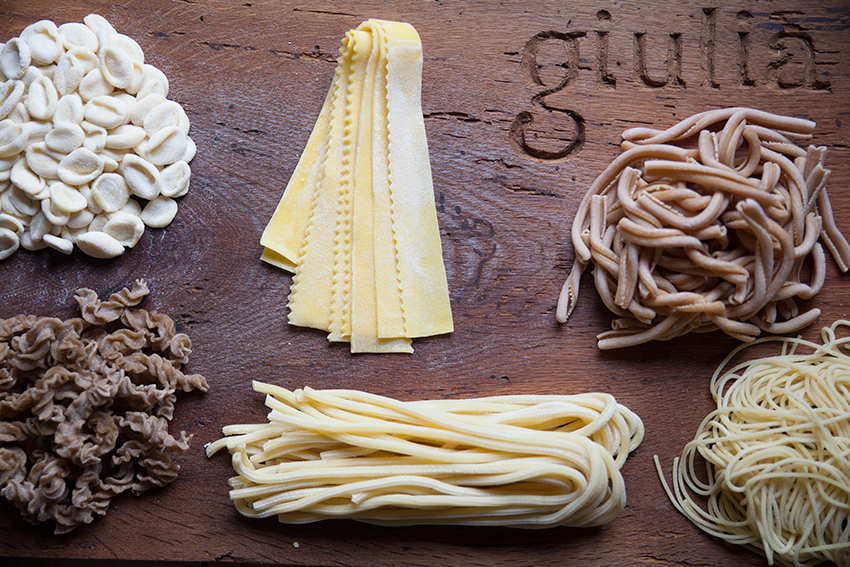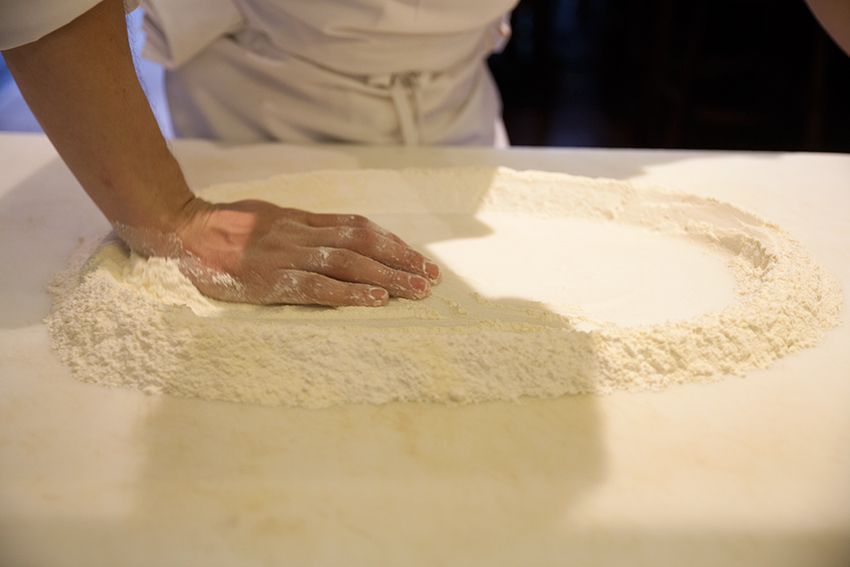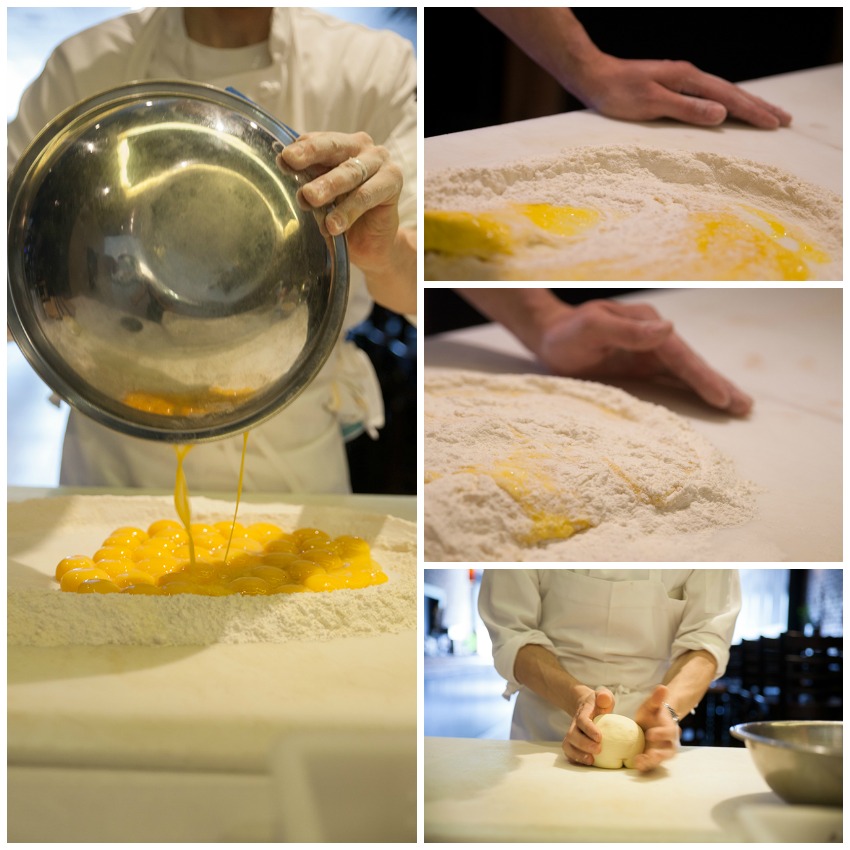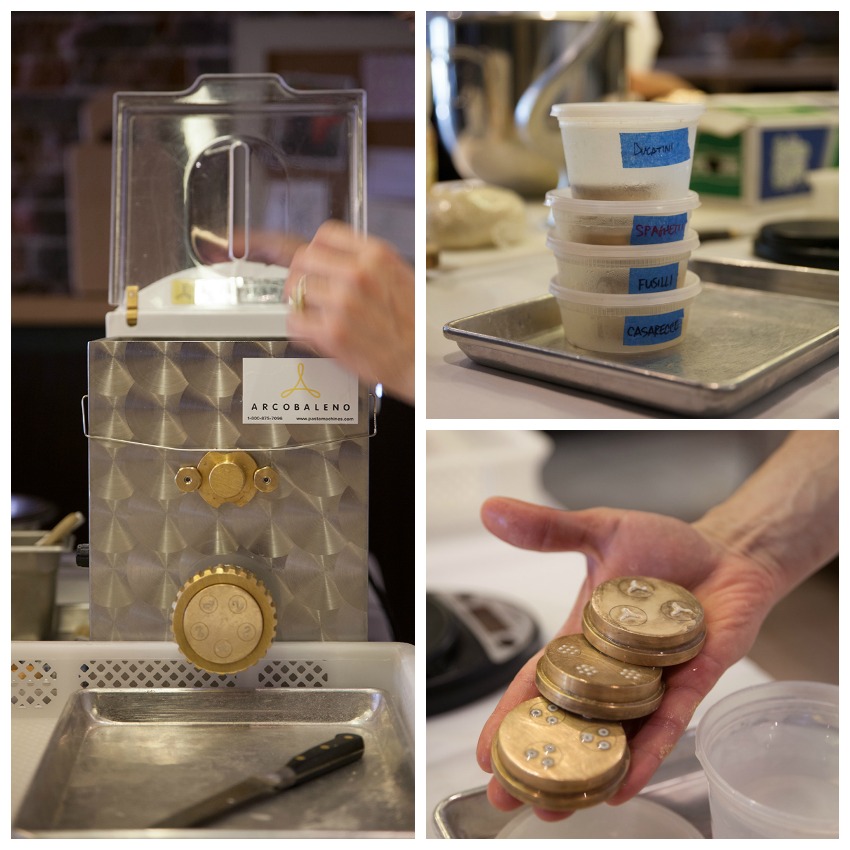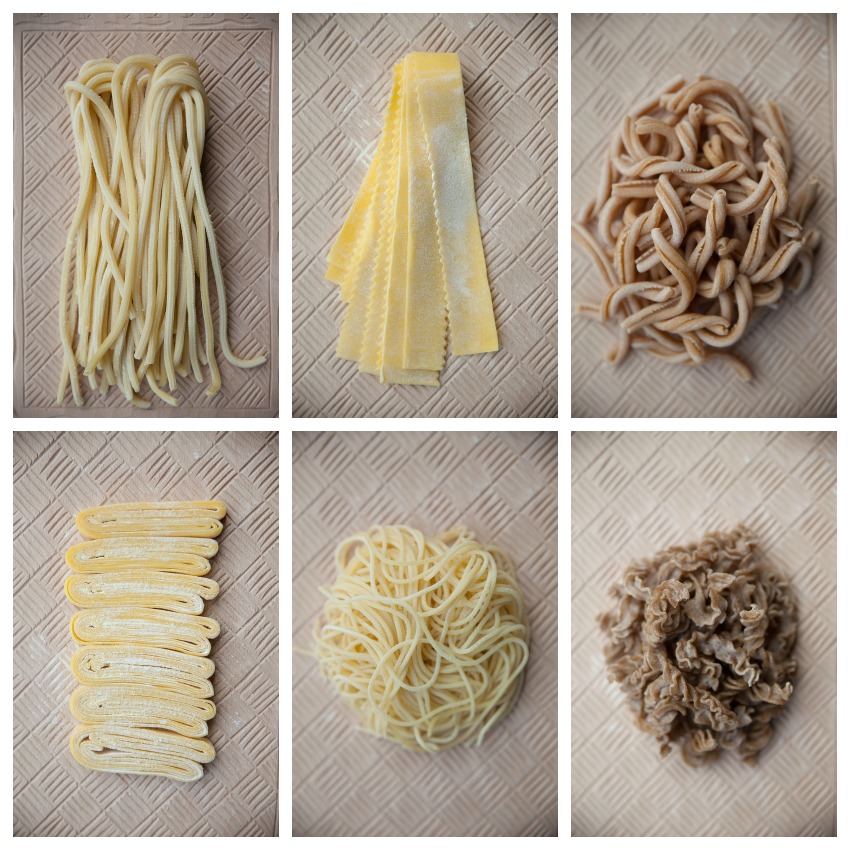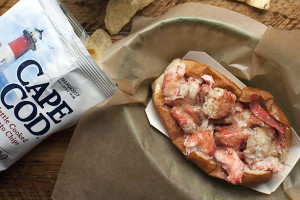An Afternoon at the Pasta Table with Giulia Chef Michael Pagliarini
Earlier this month we released our Where to Eat. Right Now. feature, which delved into several big ideas that are making our food scene tick. These ideas include everything from the new way of dining nose-to-tail to the resurgence of once-maligned New England classics. Another topic explored? The embarrassment of riches in this town right now when it comes to housemade pasta—something that is in no small part thanks to Giulia chef Michael Pagliarini, who spends each day at his Porter Square restaurant bent over a custom, 12-foot wooden pasta table (which doubles as a communal dining table by night), rolling, slicing, and extruding his menu’s seven from-scratch pastas.
Being able to craft his pasta on a dedicated table was paramount for Pagliarini when he was designing Giulia, which will be celebrating its one-year anniversary on December 4. Working at the table, “you can visualize the next bowl of pasta you make. It has a home there, a grounding there,” Pagliarini explains. “You make it, and you know that later on you will serve people at the same table. It’s a powerful connection to where your food is made, and where you’re eating.” Here, see an afternoon in the life of the noodlesmith as he slices pappardelle into fat ribbons, hand-pinches orecchiette, and drapes pasta sheets for ravioli.
About half of the pastas that Pagliarini makes are shaped from a hand-kneaded dough (like orecchiette or ravioli), and the other half are extruded (more on that below). Prior to opening Giulia, Pagliarini honed his pasta chops working both at Via Matta in Back Bay and at Ventuno in Nantucket.
Eggs yolks are carefully incorporated into the flour to create the dough for ravioli (an item that’s not currently on the menu, but often makes an appearance). Pagliarini says that on an average night at Giulia, he goes through about 80-100 portions of pasta.
After the egg yolk dough is finished, it passes through a sheeter until it reaches the right transparent thickness; then, a veal filling is pressed into place with a ring mold before the final raviolis are cut apart.
Counter-clockwise from top: How the orecchiette gets made: It’s first rolled into tubes, then cut into petite cubes, and then hand-pinched into the signature “ear” shape. Currently, Pagliarini is serving the pasta with housemade pork sausage, broccoli rabe, and Pecorino cheese.
While about half of the pastas on the menu are hand-formed, the other half are extruded, which means that the shapes are created by forcing the dough through specially-designed dies. To do this, Pagliarini favors a made-in-Italy machine from the Pennsylvania-based company Arcobaleno (it’s a machine that’s also beloved by many other chefs in the city).
Extruding pastas, particularly out of tougher-to-work-with flours (like emmer flour, used to make the farro casarecce above), helps coarser doughs come together more easily and enables the creation of shapes like tubular rigatoni and bucatini.
All in a day’s work, clockwise from top left: 1. Bucatini (now served all’amatriciana, meaning with a classic tomato-based sauce containing pancetta, onion, and Pecorino). 2. Pappardelle (served with wild boar, black trumpet mushrooms, juniper, and aged Parmesan). 3. Farro casarecce (served with red wine-braised duck). 4. Whole wheat fusilli (currently not on the menu). 5. Spaghetti (served alle vongole, meaning with a sauce of clams, tomatoes, white wine, and parsley). 6. Tagliatelle (served with foraged mushrooms, herbs, and aged Parm).
